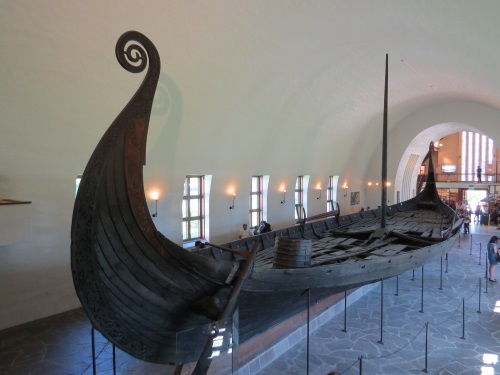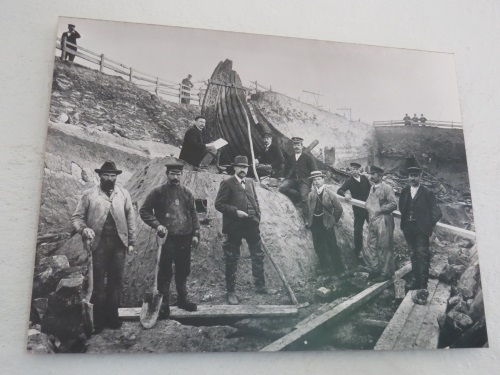Like so many serial nominations of recent years, ‘Viking Monuments and Sites’ was sent home with a deferral (2015). The cooperation between Denmark, Germany, Iceland, Latvia and Norway stranded on a weak selection of serial locations and “conceptual vagueness”. Fellow-Vikings Sweden had already earlier
left the sinking ship, stating the lack of diversity in the representation of Viking Age culture. I have been looking for news about a possible re-nomination in the future, but have not found any indication that they’re working on it.
 |
| Oseberg burial ship |
Norway contributed two locations to this initiative: the Hyllestad Quernstone Quarries and the
Vestfold Ship Burials. Combined they’re one site that still features on the Norwegian Tentative List. To make things even more confusing, the Hyllestad Quarries has one location and the Vestfold Ship Burials has three. They’re not close to each other, even lie in different parts of South Norway. And one wonders what’s still left to see, as 2 out of the 3 ship burials have been removed from their original sites to the
Viking Ship Museum in Oslo.
During my visit to Oslo in the first weekend of June, I went to see exactly this museum. It is one of many museums on a kind of ‘museum peninsula’ at the outskirts of the Norwegian capital. The Viking Ship Museum is a cross shaped construction, almost like a church. 3 out of its 4 arms contain a completely restored burial ship. They include the ones excavated from Oseberg and Gokstad – 2 of the sublocations that comprise the TWHS.
 |
| Animal-head post from the Oseberg burial |
The practice of ship burials was used by the Vikings in the 9th and 10th century. Seaworthy wooden ships were placed in burial mounds, the ship being an important symbol of power for the Viking nobility. They held skeleton remains of deceased, plus burial gifts including for example “… kitchen equipment, farm equipment, three ornate sledges and a working sledge, a wagon, five carved animal heads, five beds and two tents. There were fifteen horses, six dogs and two small cows.” (inventory of the Oseberg ship).
The burial ships of the Viking Museum are displayed in their full glory. The visitor can admire them from all sides, even from above: each room has a little balcony from where you can look into the ship and take the better pictures. The Oseberg ship is the one with the best wood carvings. Some of the burial gifts are also on display, especially the wagon with wooden wheels is impressive and looks remarkably complete.
 |
| Excavating the Oseberg ship (1904) |
It would be nice to hear from someone who has visited one of the archaeological sites that make up this TWHS. They lie a bit too far from Oslo (1.5 hours at least) for a casual visit during my short stay. As far as I can imagine from the descriptions, 2 out of 3 are ‘empty’ burial mounds. They are advertised as 'a memorial landscape'. The ships were already excavated in the early 1900’s and preserved in Oslo. Will this ever become a WHS? I seriously doubt it.
I remember passing by the Vestfold Ship Burials archaeological site as a stopover while driving from Northern Norway to Oslo six years ago and I surely wasn't impressed as there's pretty much nothing left to see. It's a bit like several early man/homonid sites, where the main findings with OUV are kept safe in a museum. The Viking Ship Museum in Oslo most probably has the best examples of intact viking ships and remains worldwide. I will visit the viking ship museum in Roskilde, Denmark in July since I don't think it will take too long to visit the Cathedral.